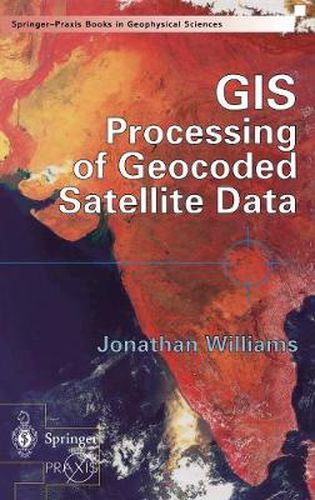Readings Newsletter
Become a Readings Member to make your shopping experience even easier.
Sign in or sign up for free!
You’re not far away from qualifying for FREE standard shipping within Australia
You’ve qualified for FREE standard shipping within Australia
The cart is loading…






This title is printed to order. This book may have been self-published. If so, we cannot guarantee the quality of the content. In the main most books will have gone through the editing process however some may not. We therefore suggest that you be aware of this before ordering this book. If in doubt check either the author or publisher’s details as we are unable to accept any returns unless they are faulty. Please contact us if you have any questions.
The book opens with the basic techniques of satellite geocoding (including the use of GPS and mosaic production) before describing a wide range of algorithms for extraction of information from optical and radar satellite images. The text then moves on to address the derivation of topographic information from space (including the recent Shuttle Topographic Radar Mission) followed by an explanation of the added-value obtained through the integrated use of geocoded satellite data in a Geographic Information System (GIS). Practical commercial and scientific applications are described in detail - first looking at land applications such as agriculture and civil engineering and then at the oceanographic, atmospheric and cryospheric worlds. Jonathan Williams reviews recent developments in ‘environmental monitoring and global security’ such as hazard and disaster monitoring, population dynamics and space missions dedicated to environmental monitoring (such as the Earth Observing System and the European ENVISAT Mission). Finally, the author draws together all the threads under the generic term of geomatics - addressing cutting-edge developments such as Very High Resolution Imagery (VHR) and the role that satellite data may play in the development of Location Based Services for the third-generation telecom market.
$9.00 standard shipping within Australia
FREE standard shipping within Australia for orders over $100.00
Express & International shipping calculated at checkout
Stock availability can be subject to change without notice. We recommend calling the shop or contacting our online team to check availability of low stock items. Please see our Shopping Online page for more details.
This title is printed to order. This book may have been self-published. If so, we cannot guarantee the quality of the content. In the main most books will have gone through the editing process however some may not. We therefore suggest that you be aware of this before ordering this book. If in doubt check either the author or publisher’s details as we are unable to accept any returns unless they are faulty. Please contact us if you have any questions.
The book opens with the basic techniques of satellite geocoding (including the use of GPS and mosaic production) before describing a wide range of algorithms for extraction of information from optical and radar satellite images. The text then moves on to address the derivation of topographic information from space (including the recent Shuttle Topographic Radar Mission) followed by an explanation of the added-value obtained through the integrated use of geocoded satellite data in a Geographic Information System (GIS). Practical commercial and scientific applications are described in detail - first looking at land applications such as agriculture and civil engineering and then at the oceanographic, atmospheric and cryospheric worlds. Jonathan Williams reviews recent developments in ‘environmental monitoring and global security’ such as hazard and disaster monitoring, population dynamics and space missions dedicated to environmental monitoring (such as the Earth Observing System and the European ENVISAT Mission). Finally, the author draws together all the threads under the generic term of geomatics - addressing cutting-edge developments such as Very High Resolution Imagery (VHR) and the role that satellite data may play in the development of Location Based Services for the third-generation telecom market.